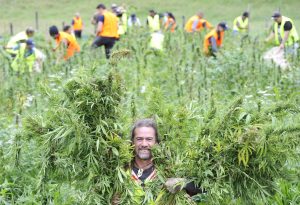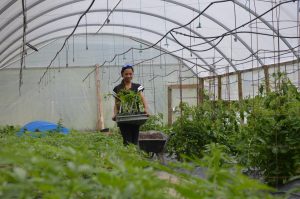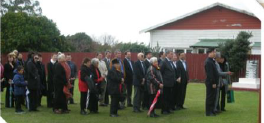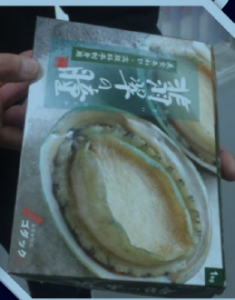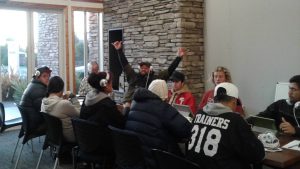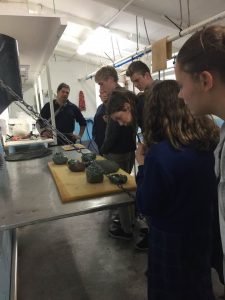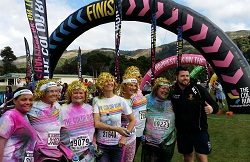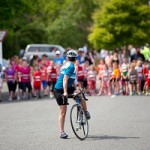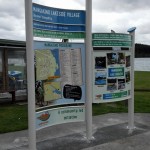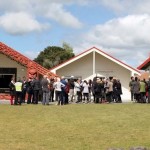Hemp venture places community at the heart of business
Hikurangi Enterprises, a charitable company based in Ruatoria, is placing local employment and environmental sustainability at the centre of a hemp growing venture that aims to build economic development in the Tairāwhiti region.
As a business enterprise, they offer a strong example of how local businesses can incorporate community-led development principles to enhance well-being, engagement and ownership within their communities.
Hemp is the same plant as marijuana but with low-THC (tetrahydrocannabinol) so it doesn’t carry the psychotropic effect. It is increasingly sought after for its medicinal properties, the market this venture is capitalising on. With the perfect climate and a wealth of existing local knowledge and expertise, hemp offers a high value alternative to marijuana for the region.
Using existing strengths and assets
There are 15 local growers already involved in the venture with 300 years growing experience between them. They are the experts in the field and have provided the tools and resources to trial varieties and develop a premium quality crop.
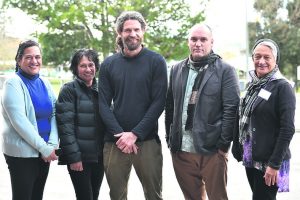
Viewed positively by the local community, many landowners have offered blocks of land for growing hemp when the venture is ready to scale up.
“People are willing to give anything a go that has some real potential and that is aligned with community values. This is seen as consistent with the values of whānau and landowners in a way that other opportunities [such as oil and gas exploration] aren’t.” – Manu Caddie of Hikurangi Enterprises
Working adaptively, learning informs planning and action
Flexibility is essential to this venture as the social, political and legal landscapes around growing and selling hemp are constantly shifting. It is a brand new industry in Aotearoa that is highly regulated. These factors make investors cautious.
After a successful crop trial in 2016, Hikurangi Enterprises is in the process of strengthening local and international business relationships, working through complex regulation laws and market testing their products.
There are many hurdles yet to be faced but the community remains confident in the venture. They are developing a business model that encourages local community investment and protects growers so that they can collectivise and have ownership over the production space.
“We’re trying to be community-led and owned in real ways. That includes making sure the community has tangible ownership not just philosophical.” – Manu Caddie
Even at these early stages, the positive community impacts are visible. Hemp growers can work with the plant they know and love without risking arrest and time away from their families. They are seen as making positive contributions to whānau well-being and the development of the region. Alongside the obvious economic benefits for the area, these shifts in perception allow the flourishing of a strengthened and empowered community.
“Locals who had been seen as dope growers are being seen as productive contributors to local economic development and hard working horticulturalists. They are sensing that change already.” – Manu Caddie
To find out more about the work of Hikurangi Enterprises visit https://hikurangi.enterprises/.
Blackball: Embracing Opportunity
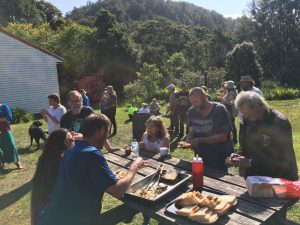
The town of Blackball is stepping up to meet the opportunities predicted to come from the new Paparoa Track and Pike29 Memorial Track between Blackball and Punakaiki. The latest addition to New Zealand’s Great Walks, this track is expected to attract 6000 people per year when it opens in 2019.
Since the announcement of the new track in 2015, the residents of Blackball – a town of 300 – have spent the last two years working with the Department of Internal Affairs (DIA) knitting together a unified outlook and building strategic relationships with national and local authorities. Determined to keep the vision and values of the local community at the heart of decisions for the town as tourism grows, Blackball has entered into a partnership for community-led development with DIA. With DIA offering five years of support, the residents plan to use this opportunity to achieve significant community-driven change in their town.
“The partnership is less about funding and more about working together as a community with common goals and aspirations” – Cynthia Robins, member of the Steering Committee
Building diverse and collaborative local leadership
A volunteer Steering Committee formed after an inspirational workshop co-hosted by Inspiring Communities and neighbourhood-building champion Jim Diers. While leaders in their own right, they will be the first to say that it is the community that leads change in Blackball. The Committee forges strategic relationships, tackles roadblocks to progress, and brings the community together when it’s time for action.
Using shared local visions to drive action and change
The residents of Blackball see their community as their greatest strength. They use town meetings, postal and online surveys, door-knocking and anonymous voting ballots placed in local businesses to ensure that every single resident of the town has an opportunity to put forward ideas and participate in decisions. At no point in the idea development or decision-making process is there a single leader or group making decisions on behalf of everyone else.
“We try very hard not to be a benign dictatorship. We open the dialogues with the right organisations and advocate for the community of Blackball to make things happen” – Cynthia Robins
Many people, groups and sectors working together
For a period of four months, the Committee met every week with representatives from DOC, DIA, Development West Coast, Grey District Council and Tai Poutini Polytech, forging strong alliances and planning a community open day. Roadblocks are a natural part of any development project and these relationships are key to gaining outcomes.
Over the last two years, the residents of Blackball have become fully engaged in being part of the change they want to see in their town.
“The community leads. The Committee is just there holding all the different strings but it is the community that pulls the reins” – Cynthia Robins
Embracing the new opportunities offered through their partnership with DIA, the town is determined to learn from the support they will receive over the next five years so that they emerge fully empowered to create the changes they want for their community.
Ōpōtiki using their taonga to harbour a dream
Decades ago, some Whakatōhea kaumatua advocated farming the sea, and rebuilding the marine based economy which the Iwi had been renowned for pre-confiscation. At the time there was scepticism – maybe the vision seemed impossible….
Ōpōtiki now has the largest offshore marine farm in New Zealand and local iwi, Te Whakatōhea is the majority shareholder. Over the past 20 years Te Whakatōhea and partners have co invested in research and farming infrastructure to harvest spat and grow mussels. Both are now being produced at extraordinary rates.
It’s now time to fulfil the plans to develop the Ōpōtiki Harbour so that both the farm can be serviced and the mussels processed locally – generating local jobs and wealth. Regional commitment to investment is lined up, awaiting government commitment so that construction can commence.
Ōpōtiki, an eastern Bay of Plenty sea side town resident to nearly 5 thousand, was once considered one of New Zealand’s most deprived communities. The town has had heavy unemployment, decreases in population, and a large dependence on government benefits. Increasingly both locals and outsiders are perceiving it differently. They’re beginning to believe that benefits plus seasonal work in kiwifruit need no longer be the only option for a significant portion of the population.
Through their joint leadership, Te Whakatōhea and the Ōpōtiki District Council have integrated iwi and community-led development approaches to empower their community’s transformation.
Shared local visions drive action and change
Ōpōtiki had a desire for change, they envisioned a community that could be more sustainable: Iwi saw opportunity for economic growth congruent with their values and aspirations, that would lead to job opportunities for their people; the Council saw potential in a sustainable seafood industry, along with other industries enabled by a viable harbour, which would all support the community’s wider vision for change.
Using existing strengths and assets
UTe Whakatōhea has a strong connection to the sea. Traditionally known as enterprising seafarers and coastal traders, their history is closely linked to the ocean. The community saw their vision as an asset, one of great value in rebuilding a vibrant local economy and wellbeing. Layered over this was Ōpōtiki harbour. It had been developed in European settlement times for whaling and coastal trading, and was once a busy, thriving harbour – a connection to both European and Māori heritage.
Many people, groups and sectors working together
MTe Whakatōhea, settled on their vision to develop the marine farm, reached out to multiple groups and organisations to assist. Ōpōtiki District Council, with community support got behind the initiative, taking leadership to develop the Harbour. Getting the marine farm underway and confirming the viability of the harbour development has been complex. Processes with community, iwi, multiple central and local government layers, scientist, researchers, investors and a wide range of businesses. There’s been effort regionally, nationally and internationally over many years and that’s created more relationships and trading opportunities both here and overseas.
The Ōpōtiki Marine Advisory Group, established nearly a decade ago, has been a constant thread at the local level, bringing Council, Te Whakatōhea, marine farm leadership and other business people, to the table, along with funders, the regional council and economic development agency.
Working adaptively, learning informs planning and action
WOver the decades of persistence, patches of progress have been frequently interrupted by knock- backs and road- blocks. Two things stand out. One is a collective determination to keep going, learning from experience and adapting to new circumstances and ideas. The other is the value of diverse skills, knowledge and leadership skills around the tables driving these projects, which means different people and organisations can step up when leadership is needed, and then step back as new challenges and opportunities emerge, demanding other expertise.
Watch Ōpōtiki Mussell Farm on Seven Sharp.
Te Hā o Mātauranga Kaikoura
Te Hā o Mātauranga – Learning in Kaikōura is a community hub. Local people people doing extraordinary things following the 2016 Kaikōura earthquake.
Kaikōura is a small coastal town located on the east coast of the South Island – largely known for its whale watching and tourism economy. Te Hā o Mātauranga – Learning in Kaikōura , opened its doors in March 2017 only 3 months after the 7.8 magnitude earthquake that struck the town the previous November. Operating from what was once Kaikōura ’s museum building, the space has been transformed into a community collective with workshops and educational training.
Talking to Sarah Beardmore the Coordinator of Te Hā o Mātauranga, it’s easy to see the enthusiasm and love the community have for their town.
“Our main ethos is to promote, enable and encourage learning opportunities within the community. With support of the JR McKenzie Trust, MBIE and the Lottery Hurunui Kaikōura Marlborough earthquake relief fund we are building on exciting prospects, while recognising the impact the earthquake has had.”
One example is MBIE’s Curious Mind Fund. “It enabled us to join with University of Canterbury to work with local youth who have become involved in the post earthquake science research that has brought so many scientists to Kaikōura ” Sarah says SKIP has also been involved in funding positive activities for parents of 0 – 5 year olds – one of the activities, a photovoice project designed to share stories about sleep since the earthquake, will culminate in an exhibition in the anniversary week of the earthquake in November.
“But we want to look forward. So we’re running workshops to garner ideas and vision. Megan Courtney and Kindra Douglas from Inspiring Communities’ ran two workshops here recently, helping the community to build on their existing strengths in a sustainable way.”
Community-led principles are also scattered throughout Te Hā o Mātauranga’s approach to recovery and positive change.
Utilising existing strengths and assets
“The issues facing Kaikōura existed pre-earthquake but they are just greater now. The community Is turning a negative situation into something positive. By capitalising on the environment, using our contacts and our community’s strengths we have come together and enabled the community to move forward using tools like education. An afterschool programme for children run by a passionate local, to create crafts from recycled materials has led to new ideas around adults creating items from recycled materials – hopefully for on-selling. Local experts have come forward to support learning – for example a primary school teacher has run reading afternoons for school children and another is running slam poetry workshops. “
Shared local visions drive change
The group and the community as a whole are focusing on upskilling: promoting education across all age groups. “So we encourage external providers to offer training in Kaikōura , but as well, we support locals to share their skills and ideas.” Te Hā’s space has hosted a number of different educational training sessions from a partnership with He Toki, a Ngāi Tahu Māori trades training academy, who ran a 3 week course supporting people getting back into work, to a tertiary level business administration course run by ARA.
Many people, groups and sectors working together
Te Hā o Mātauranga is looking towards the next five years. The goal of the hub is for our Kaikōura families to have the confidence and optimism to make the choices they want to. Sarah reinforced the important role Te Hā is now playing to “connect and enable locals, local and central government agencies, philanthropists, businesses – basically anyone with a role to get us to that goal!
“By growing a culture of learning in Kaikōura and promoting and enabling learning opportunities, we hope to give people the support they need to grow their skills, confidence and capability.”
For more information, see their Facebook page here.
Discovering what works
By Rachel Jury- Recreation Services Manager, Upper Hutt City Council
What is your situation?
Our role is to support people to be more active, because we know that if people are more active it impacts positively not just on their physical health but also on their mental well being. To date we found that agencies, including local government, were rolling out the same types of programmes over and again – with little success. We decided if we were to get more people involved in being active, we needed to act differently. We decided to take on a more community-led focus which would involve making some of those same mistakes, but this time to learn and tell others about it.
What happened
We developed the ALIVE project. ALIVE is aimed at breaking down the barriers that prevent people from participating in regular active recreation. After a few false starts and a number of staff changes, we got underway. We employed a Team Leader and a Coordinator and it took off.
We identified key groups we needed to focus on such as senior citizens, young women, youth and middle-aged men. We wanted the ideas & activities to be created and designed by them, our local residents. We ran focus groups, all designed differently as it worked for them. For example a group of senior citizens were already meeting in the library doing theatre sports every week –we went along and asked them what they did, and what they would want to do, if anything.
A walking group was created with a social aspect; their walk involves having a drink at a café. The walking group grew as participants talked to other locals. And it changed. Some of the walkers decided to cycle instead. We also added to it, to give them a new experience we included Nordic walking which has now become part of some of the group’s activities.
The ALIVE Coordinator had a number of conversations about how we could work alongside young people. Figuring out where the barriers stood, she decided to go beyond mainstream education facilities eventually landing in the Teen Parent Unit (TPU) at Heretaunga College. They welcomed the chance to get back into some kind of organised activity, this recognises the massive change to their lives after baby is born, often they are more isolated. They wanted their baby included on many occasions – something to build activity into both mother and baby’s lives. One example: parent and toddler pool sessions.
Developing from this some of the TPU mums applied for and received grants from our Sporting Chance fund that helps pay the costs of organised sports, so they were re-engaging in sport.
Adding more value is the greater engagement between the mainstream school and the TPU – where they never met before, they are now coordinating events together.
We are ow also talking to the Marae, and a local youth worker to research new options.
The change we have noticed
We have noticed that our goal of increasing participation in physical activity through our local residents has spread to other aspects; social engagement has grown for instance. The walking group now meet about 3 times a week. Local residents are re-engaging them with their communities.
There are natural leaders that just need support to step into leadership. In one case we identified a person from one of our groups and gave her leadership training, she now runs her activity.
We haven’t got as many men involved as we would like and we have noted that is most likely because we need to find a different way again of working alongside them.
What we’ve learned
Doing this well takes time. Having the right people in the right places is vital. One size doesn’t fit all so having people that are passionate and comfortable working with locals, that they work to their strengths and feel part of the group. This may mean having a number of coordinators vs one but it makes a huge difference.
As a sector we make quite a few assumptions. We talk about money being the biggest barrier to getting people active but we need to re-define this. Walking doesn’t cost money. We can’t just assume what the barriers are. We need to break down stereotypes, find out what our local residents want and then get alongside them and do it.
We know there is a lot more we could notice and learn from ALIVE. We are now undertaking a gap analysis which will inform a wider evaluation of the programme enabling us to adapt it and make it even better.
The best thing we did was ask the people what work for them – we didn’t assume what they wanted.
Read more about how the team at the Upper Hutt City Council is helping the community to become more active.
Using ‘It’s not OK’ at Rugby League
By He Tauaa Rugby League Club Acting President Fipe Fa’amoe.
The situation
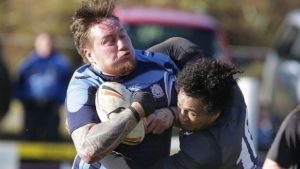 He Tauaa Rugby League club in Southland has been around since 1983. “He Tauaa” to the old Maori people, means, ‘A well drilled and organised war party of men, who would raid other tribes to show their strength and bring back the spoils.’
He Tauaa Rugby League club in Southland has been around since 1983. “He Tauaa” to the old Maori people, means, ‘A well drilled and organised war party of men, who would raid other tribes to show their strength and bring back the spoils.’
We are doing well on the field – most recently and what may be our greatest achievement – is winning the Southland Championship back to back four years running.
Being well drilled and organised, can only come from hard training, connectedness between all members and providing an environment that encourages positive behaviour.
We wanted to address a number of incidents that were taking place during the games. Back chatting to the referees, abusive comments from the side line towards players and bad attitudes. Often not from our team but none the less change was needed.
So when the opportunity to be part of the New Zealand Rugby League (NZRL) “It’s more than a Game” initiative, which promotes healthy living, positive behaviour and building stronger individuals, families and communities – we jumped at the chance.
What’s happening
We became the Southland Champion Club for the ‘It’s Not Ok’ initiative for 2016. An informative day with stall holders and guest speakers providing vital information.
Banners and flags supporting the campaign have flown freely at the games. Two club members volunteered to be our Club Champions, when there was inappropriate side-line behaviour they approached the players and supporters concerned and asked them to calm down and be more positive. The odd negative comment is quickly stamped on. The coaching team play a big role as they continually drive into the players that they need to display a good attitude and positive behaviour. This occurs at training, before and during their games. If there are any issues that require intervention, these are discussed and dealt with by our Committee.
One of our Club Champions Chris Perriam has been involved in rugby league for 29 years – 23 of them with He Tauaa. He says it’s been an honour and a privilege to represent the club as one of the Champions.
“This has been the only campaign that the Southland Rugby League community has been able to get behind that effects nearly all of us.
Growing up, family violence was a common occurrence in our house so to be a club champion was something close to the heart. I put my hand up because I know we all have our struggles in life, but there are people who can help; people who you can talk too if it is easier than talking to those closest to you. This campaign was more about letting the community know we care and to let them know that help is as close as they might think.”
The change we’ve noticed
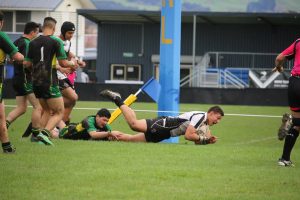 The back chatting from our team on the field this season has notably reduced in our club and side line behaviour has improved. This has been noticed by our supporters and members from other clubs. Support for this initiative has been amazing. Our players, their families, friends, Southern Zone Rugby League, our sponsors and members of the Family Violence team all attended the launch.
The back chatting from our team on the field this season has notably reduced in our club and side line behaviour has improved. This has been noticed by our supporters and members from other clubs. Support for this initiative has been amazing. Our players, their families, friends, Southern Zone Rugby League, our sponsors and members of the Family Violence team all attended the launch.
What enabled change?
One of the club champions Leona Notoa says that small things like flags, posters and tee shirts have been a constant reminder to people. Being part of the campaign meant people felt more confident to yell out and stop anything that was negative or unnecessary – referring to the slogan, “It’s not OK. Although there is still the constant banter between teams and spectators the reminder was looming and it sparked conversations.
What we’ve learned
The strength of our club is that we are whanau orientated and supportive of each other. We understand that each of us have a role to play to ensure that we are successful on and off the field. If we can continue with a positive attitude, this filters to our members and their families.
What’s next
We have certainly got off to a good start as the club won the 2016 NZRL Grassroots club of the year award for our work with the It’s Not OK campaign – we are all stoked!
We have connected with a local musician who has agreed to create a song and music specific to He Tauaa. We are hoping that the song will be ready early next year when we hold our next big event for the it not ok campaign.
Chris has produced a video:
My Inspiring Community – Randwick Park
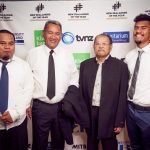 They began asking locals what would improve their place … a few years later Randwick Park has won 2017 community of the year. Maree Beaven recently talked to us about what they’ve achieved so far and how.
They began asking locals what would improve their place … a few years later Randwick Park has won 2017 community of the year. Maree Beaven recently talked to us about what they’ve achieved so far and how.
Randwick Park has also very kindly shared their story to be apart of our 2017 election manifesto please feel free to read it, and share it.
Selwyn Steps up .. and out
By Michael Wilson, Executive Officer, Selwyn Sports Trust
The Situation
In 2011 we often found asking ourselves, why? Why is Selwyn not readily recognised as a District? Why are the vast range of physical activity opportunities in Selwyn not better known? Why are Selwyn residents not catered for with ‘their own’ events? Why, why, why…
Who is involved
The ‘we’ was a group of Selwyn residents and sports enthusiasts. We had a range of experiences, involvements and ideals when it came to sport and physical activity. The thing that bound us was the pos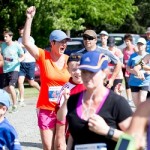 itive place we held sport and physical activity and the positive influence it had on us all. We wanted to share this with the whole Selwyn District. Selwyn Sports Trust was born from this.
itive place we held sport and physical activity and the positive influence it had on us all. We wanted to share this with the whole Selwyn District. Selwyn Sports Trust was born from this.
Well, honestly, Ellesmere Road Runners and the Selwyn Running Festival were born. Both were based out of Leeston and the community took to them. A weekly, community minded running and walking group coupled with an event that was the goal for all that regular exercise.
What we have done and how
Selwyn Sports Trust was established as we figured the support and enthusiasm shown by the Ellesmere community could be replicated Selwyn wide. The aim being to promote and support participation in sport and recreation within our District.
From humble beginnings, we have remained largely events based. Adding to our weekly running and walking groups and we’ve connected with the Malvern and Lincoln communities so we are engaging with more than 450 individuals annually.
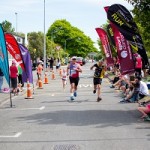 We’ve built strong relationships with other invested groups and organisations to enhance the Shoe Clinic Selwyn Running Festival. We also incorporate the Athletics Canterbury Half Marathon Championship in the Lay Associates Half Marathon, giving locals a chance to see Canterbury’s finest runners and even compete alongside them. And we’ve engaged with local businesses (McMillan Drilling Group, Oakleys Premium Fresh Vegetables and G & M Contracting) who provide more than just financial support – guidance and involvement within the Festival too.
We’ve built strong relationships with other invested groups and organisations to enhance the Shoe Clinic Selwyn Running Festival. We also incorporate the Athletics Canterbury Half Marathon Championship in the Lay Associates Half Marathon, giving locals a chance to see Canterbury’s finest runners and even compete alongside them. And we’ve engaged with local businesses (McMillan Drilling Group, Oakleys Premium Fresh Vegetables and G & M Contracting) who provide more than just financial support – guidance and involvement within the Festival too.
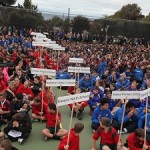 We have added two other annual events to fill gaps we identified. The Frontrunner Lake Crichton Series was a no brainer addition. Not only does this showcase the fantastic, yet largely unknown, facility – Lake Crichton, it provides first time triathletes with one of the safest ways to give the sport a go.
We have added two other annual events to fill gaps we identified. The Frontrunner Lake Crichton Series was a no brainer addition. Not only does this showcase the fantastic, yet largely unknown, facility – Lake Crichton, it provides first time triathletes with one of the safest ways to give the sport a go.
The Koru Games give South Island year 7 & 8 students an opportunity to develop their individual sporting skills while playing teams sports for their schools. There were 2000 competitors in 2016. With the support of Sport Canterbury, we will be unleashing our Physical Activity Activators on 23 Selwyn Schools from 2017.
The change we have noticed
More active communities being active together. A wider range of friendships, interactions while exercising, racing and socialising. The invisible silos within our communities have been broken down to a certain extent through people being active together, be these generational, social, gender and so on.
We hear from many of our participants that their perception of what racing is and who it is for has changed from being something for the elite and very capable and 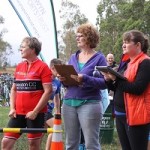 committed to something for all. We also hear that highlighting and utilising local resources and facilities is a fantastic way to show off and bring pride to the District and its residents. It’s also a great way to open the eyes of locals to what they have on their own doorstep.
committed to something for all. We also hear that highlighting and utilising local resources and facilities is a fantastic way to show off and bring pride to the District and its residents. It’s also a great way to open the eyes of locals to what they have on their own doorstep.
What we’ve learned
It has required a huge commitment from a large number of selfless individuals and organisations to begin the journey. We are very conscious of all the support and guidance we have received so far, from the individuals standing on corners during races, to those that fill out reviews to ensure we continue to cater to their needs, to the financial contributors.
We believe the initiatives and events that are the most successful are those that directly engage with their competitors and participants. Those that have clear and understood goals, vision and direction that is malleable are most successful.
We also believe that the word success has to be clearly understood. We are most definitely clear that success is not having the most participants, the largest events or making large amounts of money. It is our goal to enrich people’s lives and community well being through sport and recreation and this is how we measure success.
More info: selwynsportstrust.org.nz/
Mangakino & Whakamaru Heritage Trail
The Mangakino and Whakamaru Heritage trail has been blessed and opened (Nov 2016). When Mangakino people talked about their visions for the future during “Wow! E tū Mangakino! Let’s Dream” back in 2011, one of their community aspirations was to celebrate their area’s heritage more.
This trail is designed to link with the Waikato River Trails which attracts thousands of visitors PAST Mangakino annually – now the Heritage Trail offers them a side tour through the Townships and many memorable moments!
It’s taken a huge amount of research, persistence and patience from many people and especially Lisa, the local community broker. Recently the Mangakino community-led development group organised a community celebration for 70 years since the township was established, and blessed the new Heritage Trail – they invited everyone who had helped, along with residents of today and yesteryear. On a beautiful day at Pouakani Marae, locals, past residents and supporters gathered to enjoy and share memories, and to celebrate Mangakino.
Think local and let local do
By South Waikato Mayor, Neil Sinclair
 A truly multi-cultural District the South Waikato is right in the centre of the North Island between Hamilton Rotorua and Taupo. We are home to 23,000 people, of which about 30% are Maori and 11% Pacific Island. We are a young district, our main town, Tokoroa, was established in the 1950s when the paper mill at Kinlieth was built. Now we are 50% farming 50% forestry.
A truly multi-cultural District the South Waikato is right in the centre of the North Island between Hamilton Rotorua and Taupo. We are home to 23,000 people, of which about 30% are Maori and 11% Pacific Island. We are a young district, our main town, Tokoroa, was established in the 1950s when the paper mill at Kinlieth was built. Now we are 50% farming 50% forestry.
Yes we had a tough image, an image that unfortunately lives today. We are however a proud caring compassionate community. I know, I was a dentist for 40 years. We have the lowest crime statistics for the Bay of Plenty and my towns are almost devoid of any graffiti. But like all rural New Zealand towns we are looking at a decline in population and an aging population. We have, additionally, high youth unemployment, some poor housing stock and we are generally regarded as being a low socio economic district. It’s not an exciting picture, so why are we so confident about our district and our towns?
Councils and communities in general have to recognise their situation, accept who they are and then they can work out just what they have to do to create change. Identify your local strengths.
For us it is that we have a particularly caring, resilient community. In 2004, when I first became Mayor, through a series of circumstances I, with many others, stood on an empty section of Council land on a Thursday evening. By Sunday lunch time I was opening a children’s park on that land, with a sound shell, flying fox, BBQ, unique play equipment, swings, and a graffiti board. All done by the community. All manner of people were involved in the construction; clubs, groups, individuals, businesses, groups of people who fed us. $20,000 was raised, not a dollar from Council. Looking back now not even a resource consent! All done in 48 hours.
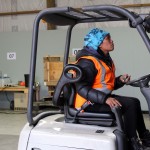 So if the community were going to be the doers then it would require an innovative, imaginative, courageous council to work with them and harness that spirit. High youth unemployment was one of the big concerns then. Council knew education was the way forward so we instituted the Mayoral Scholarship. We have great schools producing very talented individuals. Our town, because of the mill has many high-quality engineering firms; many exporting,all calling for trained staff. Council looked at the Otorohanga jobs project and decided not to copy but upgrade it. Council put $90,000 into the development of a Trade Training Centre and instructed that the best of lathes be bought. If we believed in our youth, then they needed the best equipment. Give them second hand gear and that will be how they think we feel about them.
So if the community were going to be the doers then it would require an innovative, imaginative, courageous council to work with them and harness that spirit. High youth unemployment was one of the big concerns then. Council knew education was the way forward so we instituted the Mayoral Scholarship. We have great schools producing very talented individuals. Our town, because of the mill has many high-quality engineering firms; many exporting,all calling for trained staff. Council looked at the Otorohanga jobs project and decided not to copy but upgrade it. Council put $90,000 into the development of a Trade Training Centre and instructed that the best of lathes be bought. If we believed in our youth, then they needed the best equipment. Give them second hand gear and that will be how they think we feel about them.
A group of the leaders from those engineering firms came together and set the syllabus around what they wanted as employers.The Waiariki Polytec then came on board as the Industry Training Organisation – with our lathes and industry-set syllabus. It has set the bench mark for Trade Training schemes.
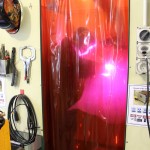 We now have engineering, auto engineering, welding, horticulture and farming training. The job uptake by our students is 97%. They know if they stay home and don’t attend someone is ready to take their place.
We now have engineering, auto engineering, welding, horticulture and farming training. The job uptake by our students is 97%. They know if they stay home and don’t attend someone is ready to take their place.
I have many more examples: Local Communities like mine have that community determination; Councils like mine have the ability to create partnerships with industry, such as what we did with Fonterra’s new $385 million milk drier, the Blue Pacific Minerals expansion, John Deere opening an engineering factory. There is the 50,000 hectares of forestry conversions that have been done using best farming practices and have brought more than 90 new families into the District.
So we can do, but how do we get Central Government to recognise that sub regional growth is taking place? Small communities like mine are making things happen because we have to if we are to maintain that which we treasure. I have had only one Cabinet Minster visit – he was in and out for the opening of the rail hub. Regional Growth they say is exploding but they mean Hamilton. We need recognition of sub-regional needs.
Encourage Local Councils like mine to be brave, courageous with their innovation and imagination. Encourage us, don’t wait and then say congratulations. As always finance is the biggie. Most of what we have done took more time than it should have as we had to justify every penny. We aren’t rich – far from it – so caution was the message, and frankly sometimes courage. We can do. Rural New Zealand can do, we all need to think local and let local do.

